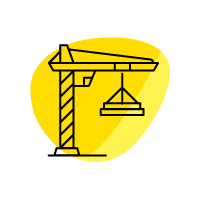On 23 June 2023, Ukraine was granted candidate status for accession to the European Union. To achieve this, the government authorities completed a questionnaire qualitatively and in record time and made great efforts towards sectoral integration.
Ukraine has achieved five so-called “visa-free” regimes with the EU (in the areas of energy, transport, economy, customs, digitalisation) thanks to systemic transformations and even under conditions of the full-scale war.
Ukraine is fulfilling its tasks with regard to European integration: it is implementing the EU Association Agreement and bringing Ukrainian legislation closer to current EU law, improving trade relations with the European Union, continuing sectoral integration into the European Union's internal market and expanding its participation in European programmes and initiatives.
At the same time, the country is facing new extensive and complex tasks as it acquires the status of a candidate country. Ukraine has the ambitious goal of being fully ready for EU membership as quickly as possible under the conditions of war.
On 8 November, the European Commission unequivocally recommended to the European Council to open EU accession negotiations with Ukraine by positively assessing Ukraine’s progress on reforms. On 14 December, the European Council then decided to open negotiations.
1. Start of EU accession negotiations
Following the European Council's decision to open negotiations, Ukraine will begin to align its legislation more closely and systematically with that of the EU, and the European Council should confirm the success of harmonisation in each of the six clusters.
Ukraine and the EU are aligning the Accession Agreement, which has to be approved by all EU member states and the European Parliament and ratified by the national parliaments of the member states.
2. Sectoral integration (so-called “visa-free” regimes with the EU in different areas)
Ukraine has achieved a high level of integration with the EU in the areas of energy, economy, transport, customs and digitalisation. The government will continue integration in these areas by removing all barriers that separate the economies and societies of Ukraine and EU member states. We also plan to achieve a “visa-free” regime in roaming (“Roam like at home” programme), continue work on “visa-free” in industry (Agreement on Conformity Assessment and Acceptance of Industrial Products), continue accession to the Single Euro Payments Area (SEPA) and obtain reciprocal access to public procurement markets. At the same time, work will continue on extending the “visa-free” regimes in the economic and transport sectors until 2025.
3. Launch of the Ukraine Facility by the EU
The European Commission has announced a four-year €50 billion programme to support Ukraine. The programme includes: 1) financial support in the form of grants and loans; 2) a special investment structure focused on attracting and mobilising public and private investment for Ukraine's recovery; 3) technical assistance, in particular the support of experts for reforms.
4. European border
Today, Ukraine's western border has become the most important logistics corridor into the EU and must meet the highest standards: maximum capacity, minimum bureaucracy, comfort around the border area for both people and businesses. This is an important part of integration into the EU and a response to the blockade of our harbors by russia.
This change-oriented project envisages the introduction of joint customs and border controls with EU countries, the active modernisation of existing checkpoints and the construction of new ones. In addition, for the convenience and speed of citizens and businesses, further expansion of the functionality of the eQueue programme is planned. All international passenger routes will be placed on the corresponding platform and the procedure for opening a passenger route will be fully digitalised.
Source - Government webportal





